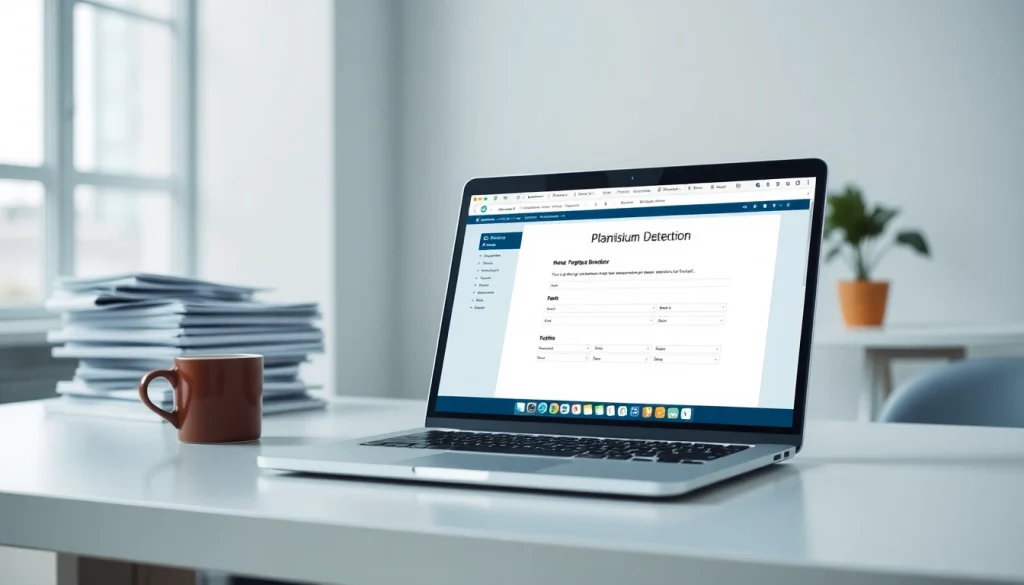Understanding the Importance of a Plagiarism Checker
In an era where information is readily available at our fingertips, the potential for unintentional plagiarism increases significantly. A plagiarism checker serves as a critical tool for students, researchers, and content creators, enabling them to ensure originality in their work. By understanding the implications of plagiarism, recognizing the importance of academic integrity, and identifying different types of plagiarism, individuals can uphold ethical standards in their writing.
Defining Plagiarism and Its Consequences
Plagiarism is the act of using someone else’s work, ideas, or intellectual property without proper attribution, effectively presenting it as one’s own. The consequences of plagiarism can range from academic penalties to legal repercussions, depending on the severity and context of the violation. In academic settings, students may face failing grades, disciplinary action, or even expulsion. In professional realms, plagiarized work can damage reputations and lead to job termination. Understanding these consequences is vital for fostering a culture of honesty and integrity.
Why Academic Integrity Matters
Academic integrity is essential for establishing trust and credibility in educational institutions. It ensures that all participants in the academic community engage honestly and ethically. Adhering to the principles of academic integrity not only enhances the educational experience but also prepares students for professional environments where ethical conduct is crucial. In today’s interconnected world, where collaborative work is common, maintaining integrity will foster respect and cooperation among peers.
Different Types of Plagiarism
Various forms of plagiarism exist, each carrying its own set of implications:
- Direct Plagiarism: This occurs when an individual copies someone else’s work verbatim without citation.
- Self-Plagiarism: Submitting one’s previous work without acknowledgment, often seen in academic resubmissions.
- Paraphrasing Plagiarism: Restating another person’s ideas without proper attribution, despite the text being modified.
- Accidental Plagiarism: Often results from neglecting to cite sources or inaccuracies in citation.
Features to Look for in a Plagiarism Checker
When selecting a plagiarism checker, there are several key features to consider that can enhance its effectiveness and your overall experience:
Accuracy and Reliability of Results
One of the primary concerns for users is the accuracy of the plagiarism detection tool. Choose a service backed by a robust database and capable of deep web searches to ensure comprehensive coverage. A reliable plagiarism checker should offer detailed reports, highlighting matched content and providing sources for easy verification.
User-Friendly Interface and Accessibility
A user-friendly interface is essential for an efficient plagiarism-checking experience. The ideal tool should require minimal technical skills to use, allowing users to upload documents or paste text with ease. Accessibility across devices, including mobile compatibility, enables users to check for plagiarism on-the-go.
Integration with Other Writing Tools
Another advantageous feature is the ability to integrate with other writing software. Tools that work seamlessly with word processors or citation tools can enhance productivity, allowing users to check for plagiarism and correct citations simultaneously.
How to Use a Plagiarism Checker Effectively
Using a plagiarism checker effectively involves understanding how to conduct a check, interpret the results, and avoid common pitfalls. Here is a step-by-step guide:
Step-by-Step Guide to Running a Check
1. Select a reliable plagiarism checker: Choose a tool that fits your needs for reliability and functionality.
2. Prepare your document: Ensure your text is clean and well-formatted to facilitate accurate checks.
3. Upload your content: Follow the tool’s instructions to upload your document or paste the text.
4. Run the check: Initiate the scanning process and wait for the report to generate.
5. Review the results: Examine highlights, matches, and sources provided in the report.
Interpreting the Results
After obtaining the plagiarism report, understanding the results is crucial. The report should outline:
- Percentage of matched content
- Sources of matches
- Specific passages flagged for plagiarism
Analyze these details to determine whether you need to revise or properly cite sections in your work.
Common Mistakes to Avoid
Many users overlook critical aspects when checking for plagiarism. Avoid these common mistakes:
- Relying solely on the plagiarism check without conducting personal revisions.
- Ignoring proper citation guidelines.
- Failing to review the implications of unintentional plagiarism.
Advanced Capabilities of Plagiarism Checkers
Modern plagiarism checkers often come equipped with advanced features that enhance their utility:
Detecting Paraphrased Content
Some plagiarism detection tools can identify paraphrased or rephrased content. This functionality is crucial as it ensures that even altered text adheres to academic standards. Utilizing advanced algorithms, these tools can discern when content has been modified but remains similar to the original source.
Support for Multiple File Formats
Effective plagiarism checkers can handle multiple file formats, including Word documents, PDFs, and text files. This versatility ensures that users can verify originality regardless of the format their documents are in.
Custom Settings for Different Needs
Customizable settings allow users to tailor the plagiarism detection process based on their specific requirements. Whether for academic, professional, or personal purposes, adjusting the settings can enhance the accuracy and relevance of the results.
Future Trends in Plagiarism Detection Technology
The landscape of plagiarism detection is in constant evolution, with innovative trends emerging rapidly. Here are some future trends and advancements:
The Role of AI in Enhancing Accuracy
Artificial intelligence is revolutionizing plagiarism detection by enabling more nuanced and sophisticated analysis. AI algorithms can learn from vast datasets, allowing them to improve their accuracy over time. This advancement will lead to more reliable detections of even the most cleverly disguised instances of plagiarism.
Emerging Tools for Educators and Institutions
New tools and platforms are being developed specifically for educational institutions, designed to help educators combat plagiarism proactively. Features may include integration with learning management systems, automatic citation checks, and real-time monitoring of student submissions.
Best Practices for Maintaining Originality
To avoid plagiarism, individuals should adopt effective writing practices, including:
- Implementing a thorough research process that emphasizes original thought.
- Regularly utilizing a plagiarism checker throughout the writing process.
- Maintaining organized notes that clearly distinguish between original ideas and sourced material.



